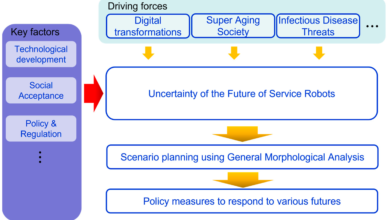Mastering Supply and Demand for Safe Logistics

Supply and demand are fundamental concepts in economics that significantly influence business operations, especially in the realm of logistics and supply chain management. Understanding these concepts and ensuring the safe transportation of supplies is critical for maintaining business continuity and customer satisfaction. This article delves into the principles of supply and demand, strategies for balancing them, and methods for safely transporting supplies.
Understanding Supply and Demand
Supply and demand form the backbone of market economies. They determine the price and quantity of goods and services in a market.
Supply: Supply refers to the total amount of a specific good or service available to consumers. It is influenced by factors such as production capacity, resource availability, and technological advancements. When supply increases, prices tend to fall, assuming demand remains constant.
Demand: Demand is the quantity of a good or service that consumers are willing and able to purchase at a given price. Factors affecting demand include consumer preferences, income levels, and the price of substitutes. Higher demand typically leads to higher prices if supply remains unchanged.
Market Equilibrium: Market equilibrium occurs when the quantity supplied equals the quantity demanded at a specific price point. This balance ensures that the market operates efficiently, with no surplus or shortage of goods.
Balancing Supply and Demand
Balancing supply and demand is crucial for business success. It involves aligning production and inventory levels with consumer demand to avoid excesses or shortages.
Demand Forecasting: Accurate demand forecasting is essential for balancing supply and demand. It involves using historical data, market trends, and statistical models to predict future demand. This enables businesses to adjust production schedules, manage inventory levels, and plan for seasonal variations.
Inventory Management: Effective inventory management ensures that there is enough stock to meet demand without overstocking. Techniques such as Just-In-Time (JIT) inventory, Economic Order Quantity (EOQ), and safety stock calculations help optimize inventory levels.
Flexible Production: Having a flexible production system allows businesses to scale production up or down based on demand fluctuations. This flexibility can be achieved through modular manufacturing processes, scalable technology, and workforce agility.
Supplier Collaboration: Strong relationships with suppliers are crucial for maintaining a responsive supply chain. Collaborative planning, forecasting, and replenishment (CPFR) practices enable businesses and suppliers to work together to anticipate and meet demand.
Ensuring Safe Transportation of Supplies
Transporting supplies safely from place to place is a critical aspect of supply chain management. It involves selecting the right transportation methods, implementing safety protocols, and leveraging technology to monitor and protect shipments.
Transportation Methods: Choosing the appropriate transportation method depends on factors such as the nature of the goods, distance, cost, and delivery time. Common methods include road, rail, air, and sea transport.
Road Transport: Ideal for short to medium distances, road transport offers flexibility and door-to-door service. Ensuring vehicle maintenance, driver training, and compliance with safety regulations are essential for safe road transport.
Rail Transport: Suitable for heavy and bulk goods over long distances, rail transport is cost-effective and reliable. Implementing robust loading and unloading procedures and monitoring rail conditions are key to maintaining safety.
Air Transport: Air transport is the fastest method, suitable for high-value or time-sensitive goods. Ensuring proper packaging, adhering to airline safety standards, and using temperature-controlled containers for perishables are crucial.
Sea Transport: Sea transport is cost-effective for large volumes over long distances. Ensuring proper stowage, securing cargo, and complying with international maritime safety regulations are vital for safe sea transport.
Implementing Safety Protocols
Implementing stringent safety protocols is essential for protecting supplies during transportation. This includes packaging, handling, and monitoring measures to prevent damage and loss.
Packaging: Proper packaging protects goods from physical damage, contamination, and environmental factors. Using durable materials, appropriate cushioning, and secure sealing are key aspects of effective packaging.
Handling: Training personnel in safe handling practices minimizes the risk of accidents and damage. This includes using appropriate lifting techniques, handling equipment, and following safety guidelines.
Monitoring: Real-time monitoring of shipments using GPS, RFID, and IoT devices provides visibility into the location and condition of goods. This allows for proactive intervention in case of delays, deviations, or safety breaches.
Leveraging Technology
Technology plays a significant role in ensuring the safe and efficient transportation of supplies. Advanced systems and tools enhance visibility, automation, and decision-making in supply chain management.
Transportation Management Systems (TMS): A TMS helps plan, execute, and optimize transportation operations. It provides real-time tracking, route optimization, carrier management, and freight auditing capabilities.
Warehouse Management Systems (WMS): A WMS streamlines warehouse operations, including receiving, storage, picking, packing, and shipping. It enhances inventory accuracy, reduces handling errors, and improves order fulfillment speed.
Supply Chain Strategy: A comprehensive supply chain strategy incorporates technology to enhance safety and efficiency. This includes integrating TMS and WMS with ERP systems, using data analytics for informed decision-making, and adopting automation technologies.
Case Study: Effective Supply Chain Strategy
Consider a global electronics manufacturer aiming to optimize its supply chain strategy. The company faced challenges in balancing supply and demand and ensuring safe transportation of high-value components.
Demand Forecasting: The company implemented advanced demand forecasting tools to predict market trends and customer preferences accurately. This enabled them to adjust production schedules and inventory levels proactively.
Inventory Management: By adopting JIT inventory practices and automating warehouse operations with a WMS, the company minimized excess stock and reduced storage costs.
Supplier Collaboration: Establishing strong partnerships with key suppliers through CPFR practices ensured a timely and reliable supply of components. Collaborative planning helped align production with market demand.
Transportation Safety: The company used a TMS to optimize transportation routes and monitor shipments in real time. Implementing robust packaging and handling protocols protected high-value components from damage during transit.
Conclusion
Understanding and managing supply and demand, along with ensuring the safe transportation of supplies, are crucial for business success. By implementing effective forecasting, inventory management, and transportation strategies, businesses can optimize their supply chains, reduce costs, and enhance customer satisfaction. Leveraging technology and maintaining strong supplier relationships further strengthens supply chain resilience and efficiency. As the market continues to evolve, businesses that prioritize these aspects will be better positioned to navigate challenges and seize opportunities.





